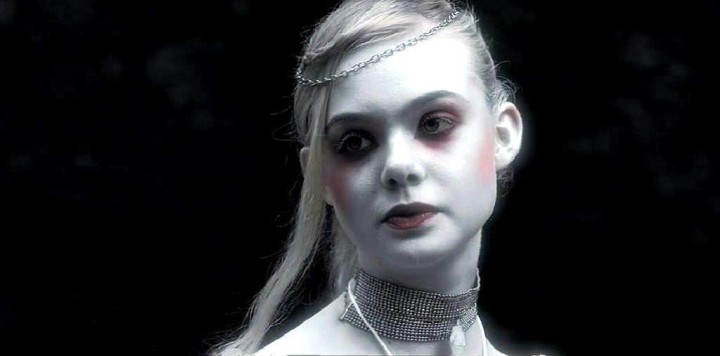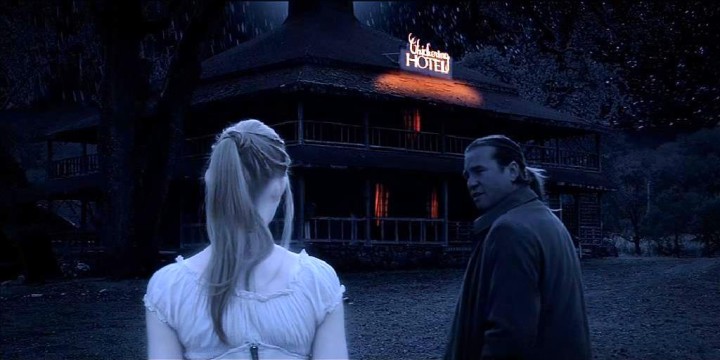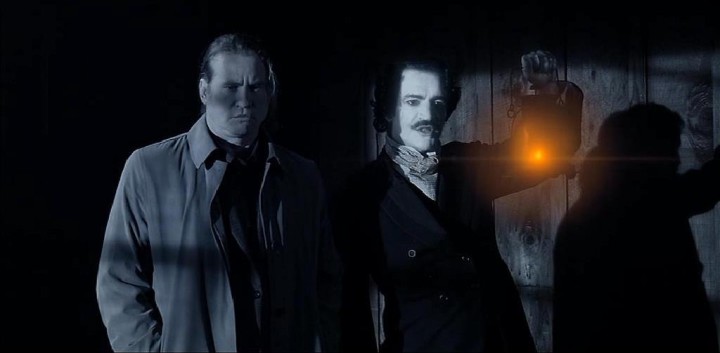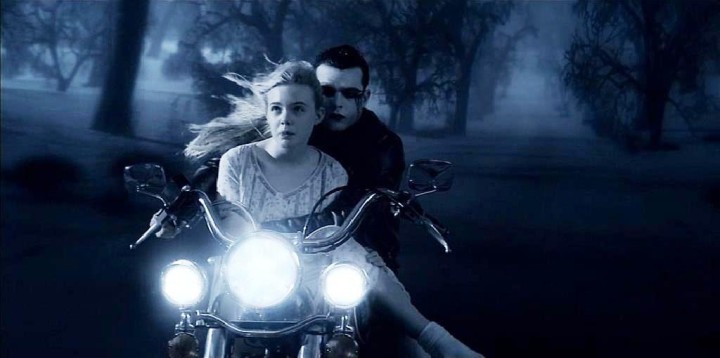Twixt (2011) is one of the great puzzlements in Francis Ford Coppola’s filmography — especially since it comes right after the amazing Tetro (2009). There’s no getting away from the fact that Twixt — fascinating as it is in some ways — is just not good. It is in fact one of the worst movies made by an artist as talented as Coppola that I can call to mind. If it had been made by a lesser filmmaker, I’d probably dismiss it in one sentence — “A puffy-looking Val Kilmer stars in this muddled horror movie that feels like it was found behind a filing cabinet in Stephen King’s basement.” Oh, alright, I’d also note that it’s visually striking with some creepy scenes. But it is Coppola and that makes it worth tussling with.
I remember when it played at TIFF — and not a single person I knew who had been in Toronto at the festival saw it, nor had they heard anything about it. So I figured I’d just wait till it was released. Well, that never happened in the U.S., so we were down to the DVD — except that was taking so long to materialize that I ordered one from the U.K. I settled in wanting to like it, and while I certainly liked aspects of it, I came away in full “What the fuck?” mode. I had — and have — no clue what Coppola was trying to do, or what he thought he was doing. More to the point, I’d love to know if he thought it was good.
The concept behind the film is that hard-drinking, hard-up schlock horror writer Hall Baltimore (Kilmer) is on the world’s worst (and most unlikely) book signing tour. He’s landed in some podunk town where the “bookstore” is actually a corner of the local hardware store. Ah, but there’s more to this town than you might think — including a weird sheriff and wanna-be writer (Bruce Dern) who keeps a corpse with a stake in its heart on ice in his office. There’s also what may or may not be a Satanist vampire cult “across the lake,” a seven-sided tower clock that appears to have been the source of Edgar Allan Poe’s “The Devil in the Belfry,” an old hotel (where Poe once stayed), Poe’s ghost (Ben Chaplin), a girl (Elle Fanning) who may be a ghost or a vampire or both, and who is also the victim of a crazed mass-murderer (Anthony Fusco) from years ago. On top of this we have Baltimore’s personal demons and — via skype — his irritable publisher (David Paymer) and his ex-wife (Joanne Whalley). The film doesn’t lack for incident.
If you’re wondering how Coppola is going to tie all this together, the answer is simple: He doesn’t. Oh, yes, it manages to come to a sort of conclusion that makes little sense, followed by the idea that it’s some kind of shaggy dog story and a jokey ending. But most of the material may as well not be there, because it has nothing — or nothing comprehensible — to do with whatever the story is. It’s ultimately a series of scenes that are often brilliantly creepy in themselves, but that don’t add up. Plus, let’s be honest, the scenes that aren’t creepy — the ones that seem to be in the real world — also aren’t very interesting. However, those weirdly poetic scenes in black-and-white with spots of color (like Sin City, The Spirit, or Coppola’s own Tetro) are something worth seeing — at least once — even if they’re in the midst of a mess.
The Thursday Horror Picture Show will screen Twixt Thursday, July 31 at 8 p.m. in Theater Six at The Carolina Asheville and will be hosted by Xpress movie critics Ken Hanke and Justin Souther.








Before you comment
The comments section is here to provide a platform for civil dialogue on the issues we face together as a local community. Xpress is committed to offering this platform for all voices, but when the tone of the discussion gets nasty or strays off topic, we believe many people choose not to participate. Xpress editors are determined to moderate comments to ensure a constructive interchange is maintained. All comments judged not to be in keeping with the spirit of civil discourse will be removed and repeat violators will be banned. See here for our terms of service. Thank you for being part of this effort to promote respectful discussion.